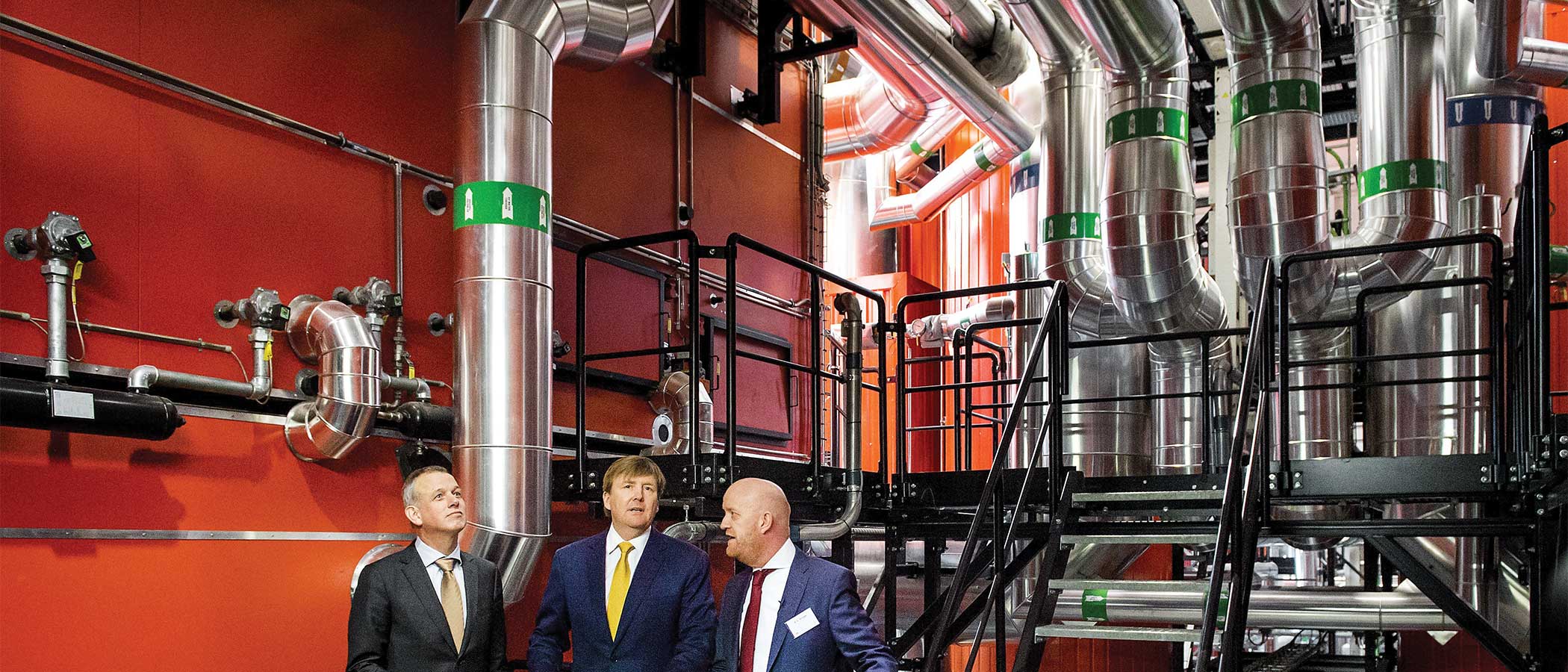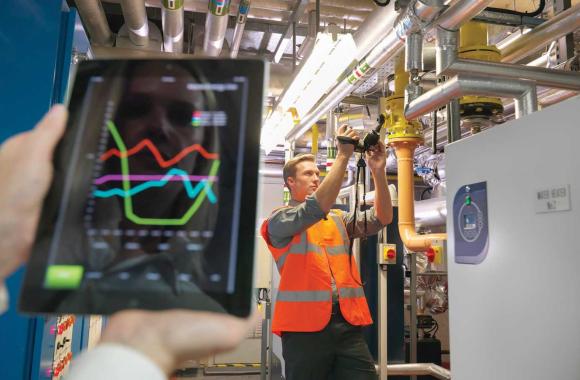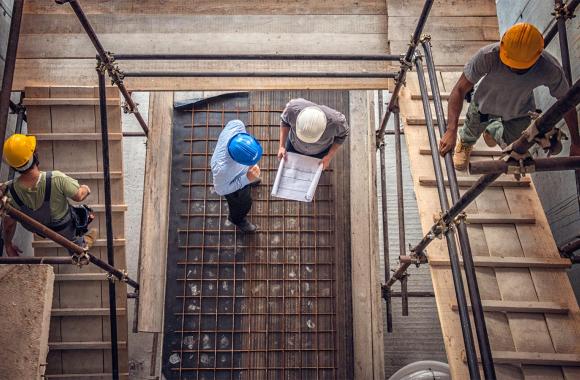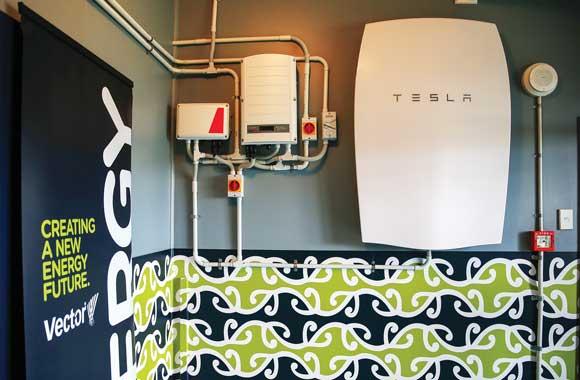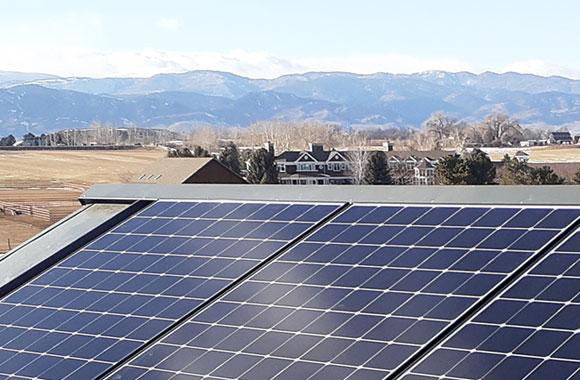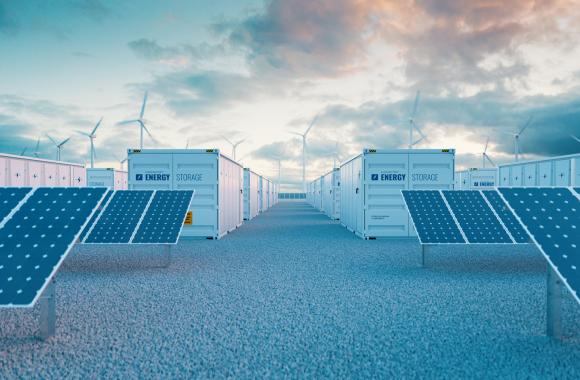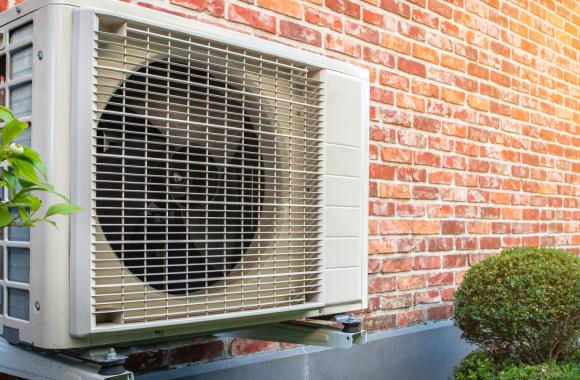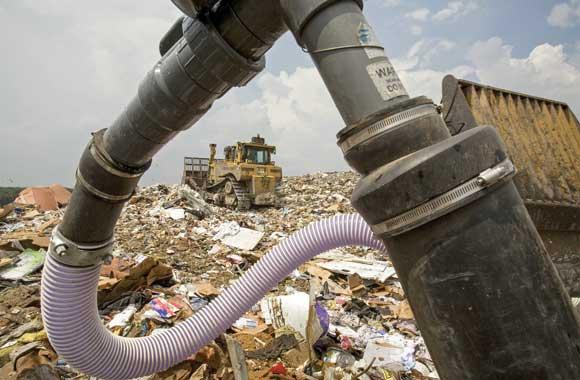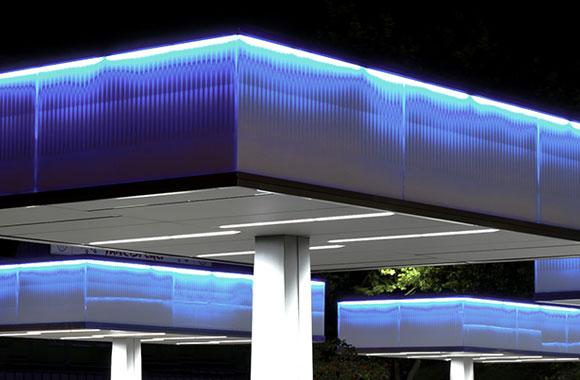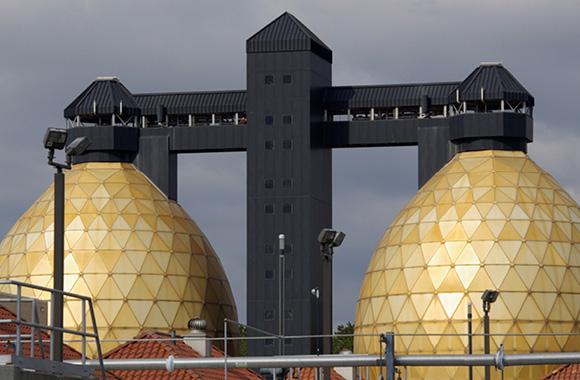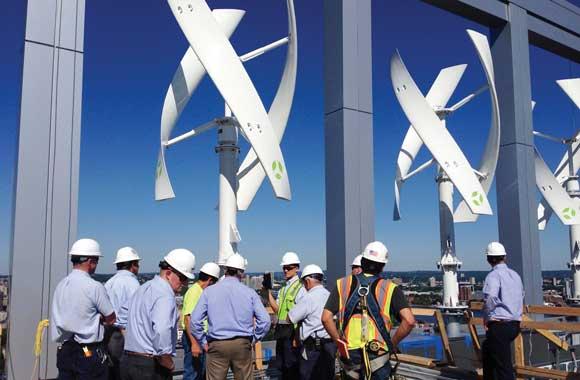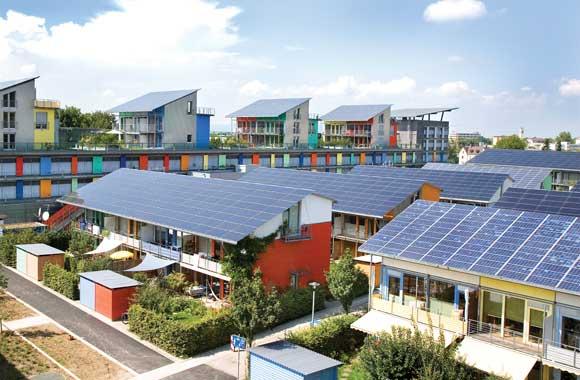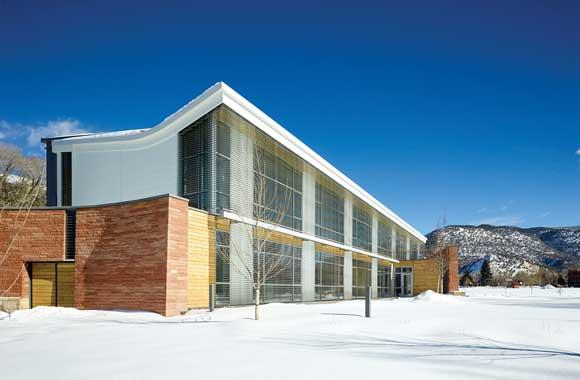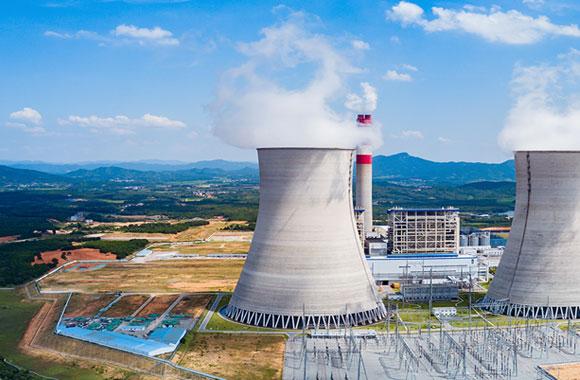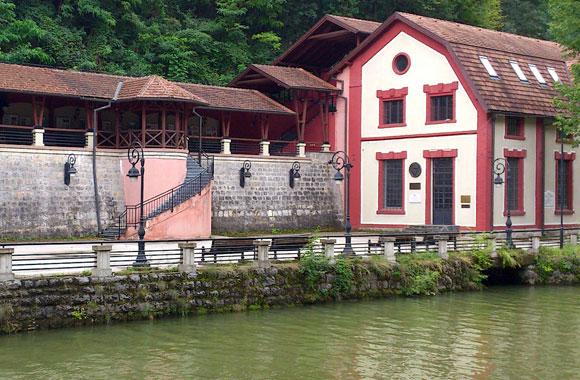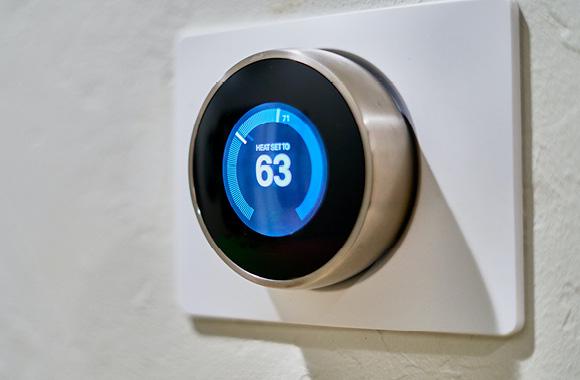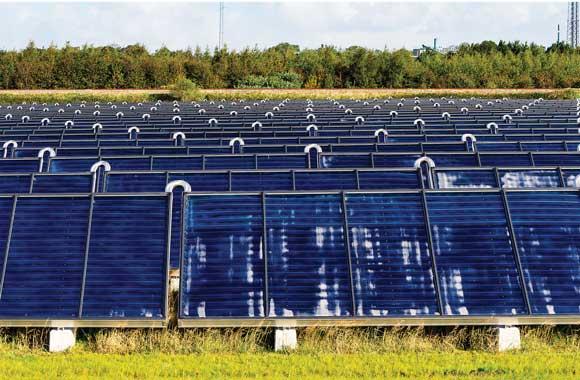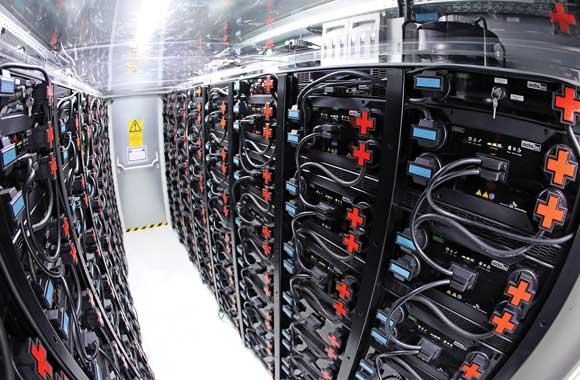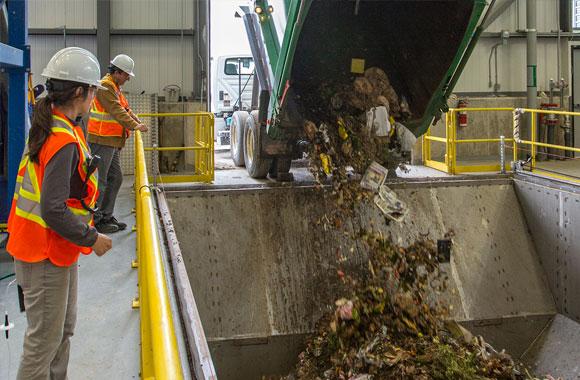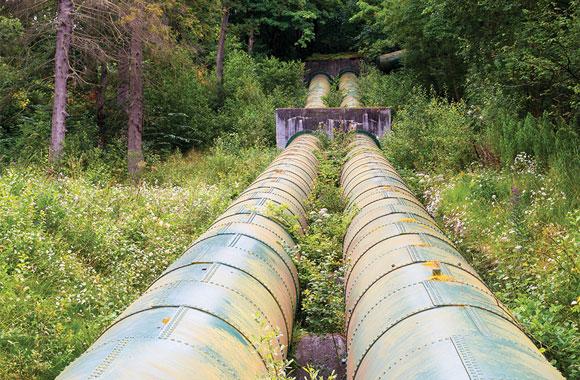District Heating
District systems reduce greenhouse gas emissions by heating multiple buildings with hot water from a central plant.
Reduced/Sequestered
2020–2050
To Implement
Operational Savings
Impact
By replacing stand-alone water- and space-heating systems, district heating can reduce carbon dioxide emissions by 6.18–9.68 gigatons by 2050 and save US$1.54–2.34 trillion in energy costs (setup costs would be US$218.34–325.50 billion). Currently, renewable district heating systems supply only a small fraction of delivered building heat. While natural gas is currently the most prevalent fuel source for district heating facilities, we model the impact only of renewable sources such as geothermal and biomass energy that will become more prevalent over time, and an availability analysis shows that there is much room to grow.
Introduction
Project Drawdown’s District Heating solution involves the use of a centralized, renewably powered heating system and the distribution of generated heat to buildings through a network of insulated buried pipes, to satisfy the demand for space heating. District heating replaces the conventional practice of heating indoor spaces individually, with heat generated on-site. District heating allows for the use of more efficient boilers that are only available or cost-effective in larger sizes. Energy sources include biomass, solar, geothermal energy, and waste heat.
District heating systems require a minimum heat load to have a financial advantage over on-site space heating systems. The density of the demand area and average yearly temperature dictate the heat load density in an area. For typical district heating (nonrenewable) to be commercially viable, it must call for at least 2 megawatt-hours per meter of planned network length. As a result, district heating systems have been implemented mainly in densely populated areas in cooler climates (northern Europe, China, and Russia). District heating is a mature technology, with most systems currently using fossil fuels to generate heat.
Methodology
Total Addressable Market
We based the total addressable market for district heating systems using renewable energy sources is based on demand for commercial and residential building space heating from 2020 to 2050 estimated from International Energy Agency (IEA) data.
Current adoption of district heating from renewable sources represents around 10 percent of total district heating systems (at least 150 terawatt-hours therms). Increased adoption depends on increasing the number of renewably powered systems and using on-site heat exchangers instead of boilers and furnaces.
Adoption Scenarios
We calculated impacts of increased adoption of district heating from 2020 to 2050 by comparing two growth scenarios with a reference scenario, in which the market share was fixed at current levels. In each case, we analyzed the global availability of biomass and geothermal across all Project Drawdown solutions to ensure that there was sufficient renewable energy.
- Scenario 1: This scenario follows a district heating adoption trajectory from IEA ETP 2DS (2017) with an increasing share of zero-emissions sources until 100 percent of district heating is renewably powered by 2060. Renewable district heating provides 953.69 terawatt-hours of power for heating (6 percent of the total addressable market).
- Scenario 2: This scenario follows an adoption trajectory from IEA ETP Beyond 2DS (2017) with an increasing share of zero-emissions sources until 100 percent of district heating is renewably powered by 2050. Renewable district heating provides 1,399.93 terawatt-hours of power for heating (8 percent of the total addressable market).
Emissions Model
Emissions from conventional heating included fuel and electrical grid emissions based on global average final heating demand. We assumed emissions from renewable district heating to be zero and excluded any indirect emissions (e.g., from facility construction) due to limited availability of data. Emissions factors came from Intergovernmental Panel on Climate Change (IPCC) data.
Financial Model
All costs are in 2014 US$.
We assumed an average installation cost of US$1,796 per kilowatt, determined through a variable meta-analysis (the cost for conventional heating was US$198 per kilowatt). Due to the technology maturity, we used a learning rate of 2 percent, similar to the one applied to the conventional technologies the solution is replacing. We used an average lifetime of 24 years for the solution, compared with 19 years for conventional heating.
Integration
We integrated the District Heating solution with others in the Buildings sector by first prioritizing all solutions according to the point of impact on building energy usage, putting building envelope solutions such as Insulation first, building systems such as Building Automation Systems second, and building applications such as High-Efficiency Heat Pumps last. We calculated the impact on building energy demand for highest-priority solutions and reduced energy-related district heating input values to reflect the impact of higher building envelope solutions.
Although we used the term “priority,” we do not mean to say that any solution was more important than any other, but rather that for estimating total impact of all building solutions, we applied the impacts of some solutions before others, and used the output energy demand after application of a higher-priority solution as the input to a lower-priority solution.
Results
All costs are presented in 2014 US$.
Increasing the use of the District Heating solution from approximately 1.6 percent in 2018 to 8 percent of building space heat supply by 2050 under Scenario 1 would require an estimated US$218.34 billion in net first costs, provide a net operational savings of US$1.54 trillion over the technology lifetime, and reduce emissions by 6.18 gigatons of carbon dioxide equivalent over 2020–2050.
Under Scenario 2, this solution could reduce 9.68 gigatons of carbon dioxide equivalent emissions from 2020 to 2050 and provide US$2.34 trillion for a net first cost to implement of US$325.50 billion.
Discussion
District heating has two main advantages. First, the systems are highly flexible: It is much easier to impact 10 buildings if they are on a common distribution loop than by trying to negotiate with each of the individual buildings to install efficient renewable technology at each of the buildings. Second, district heating employs economies of scale and economies of scope to install preferred technologies at a scale larger than individual buildings.
Limitations
The adoption path for district heating is influenced by numerous factors, including how close buildings are to each other, how much heat is needed, and the location of the heat source.
In some parts of the world (such as the US and Europe), the existing drinking water and sewage infrastructure has reached the end of its lifetime. If replacing those networks can be coordinated with installing new district heating piping networks, the cost of the systems could be significantly reduced. In new construction, the cost of piping can in some cases be cut in half by utilizing radiant heating systems to distribute the heat inside the buildings, significantly decreasing first costs.
Some of the first targets for conversion to renewable district heating systems should be fossil-based district heating systems, which are numerous in China and Russia. Converting these to renewables can have climate, financial, and health benefits. Several other systems in Europe can also be upgraded to meet low emissions targets.
References
International Energy Agency. (2017b). Energy Technology Perspectives 2017 (p. 443) , IEA/OECD, Paris.
What You Can Do
If your campus or community is growing, encourage decision-makers to consider district heating.
If your campus or community uses district heating, encourage decision-makers to shift the energy source toward renewables.
- Expand your knowledge by exploring another Drawdown solution.
Co-benefits
District heating can reduce air pollution in urban areas.

